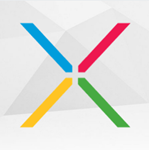Ever since Gingerbread and the Nexus S, the Android world has been in a constant and dramatic state of UI flux and we've all faced some hard questions as we adjust to new interface design. "What's the best way to layout software buttons?" "Can we live without micro SD cards?" "Where is all this new hair coming from?" Matias Duarte took to Google+ to answer two out of these three questions you have about your growing pains.
On the subject of the decision to change the UI on the Nexus 10 to be more in line with the Nexus 4 and Nexus 7 layouts:
Consistency and usability are really important to us, and that’s something we strive to improve in every new version of Android. With Honeycomb we first introduced the idea of a completely onscreen navigation UI which gave us unprecedented flexibility in how that UI adapts and transforms - both when you turn the device in your hands and when the software changes and has different control needs. Now in Jelly Bean we’ve made the universal software navigation buttons and system bar consistent across all screen sizes.
This new configuration is based on usability research we did on all of the different form factors and screen sizes that Android runs on. What mattered most of all was muscle memory - keeping the buttons where you expect them, no matter how you hold the device.
Phones are almost always used in portrait mode, flip sideways occasionally, and never go upside down. As screen sizes get larger though, any which way goes. Imagine the frustration you’d feel if every time you picked up a tablet off the table ‘the wrong way up’ you found yourself reaching for a home button that wasn’t where you expect it to be? That irritation adds up and over time like a tiny grain of sand in your shoe and undermines the rest of your experience.
The Jelly Bean system bar always keeps the same 3 buttons where you expect them. This happens dynamically for every screen size, up until you get to small handheld screens where stacking the bars in landscape mode would leave too little vertical space.
The second thing we discovered was that there are almost as many different ways of holding our devices as there are people. In fact people love to use their Nexus so much that they use them for such long periods of time that having a single ‘correct grip’ is actually counter productive and increases hand strain. The Jelly Bean navigation buttons work equally well for left handers and right handers, one handed use, or two handed use, and for devices you’re carrying, resting on your knee, or putting on the table.
Last but not least, by unifying the design we are now able to put Notifications and Quick Settings right where you’d expect them, and only one swipe away.
While people like myself and our own Jeremiah might find the space to be a bit wasted, it does at least come as a bit of comfort. It's certainly true that the new notifications in Jelly Bean, as well as Quick Settings, make more sense in a swipe-down, gesture-based system. Over time it's likely that most users will simply grow to accept the layout like we did the move to capacitive buttons.
There was a much more abrasive decision Google has made in recent years that Duarte also addressed, though. On the subject of the decision to leave out micro SD cards on Nexus devices:
Everybody likes the idea of having an SD card, but in reality it's just confusing for users.
If you’re saving photos, videos or music, where does it go? Is it on your phone? Or on your card? Should there be a setting? Prompt everytime? What happens to the experience when you swap out the card? It’s just too complicated.
We take a different approach. Your Nexus has a fixed amount of space and your apps just seamlessly use it for you without you ever having to worry about files or volumes or any of that techy nonsense left over from the paleolithic era of computing.
With a Nexus you know exactly how much storage you get upfront and you can decide what’s the right size for you. That’s simple and good for users.
Despite all the conspiracy theories to the contrary, this is consistent with what we've heard before from Dan Morrill. Like it or not, Google simply doesn't want to confuse users with prompts on where to save data. Of course, the real problem most of us have with this philosophy is when it's coupled with low storage options. The confusing decision to start the Nexus 4 line at 8GB has made it difficult to stomach the lack of expansion.
As an interesting side note, if you were to go to the Play Store, head to Devices, and select the Nexus 4, the default option is the 16GB version. It seems like Google may perceive the 8GB model as a step down to save some cash, rather than seeing it as the base with the 16GB as a step-up. The one thing the company seems to neglect is that the target market for "people who want to save some money" is everyone.
Still, it's nice to get some transparency from the man who's brought all these dramatic shifts in the Android ecosystem. So far it seems to be for the better, even if there are some difficult decisions being made that might take some time to adjust to.
Source: Google+

